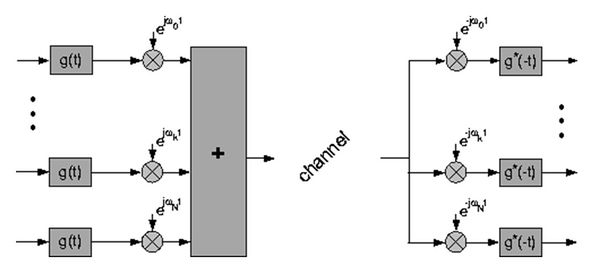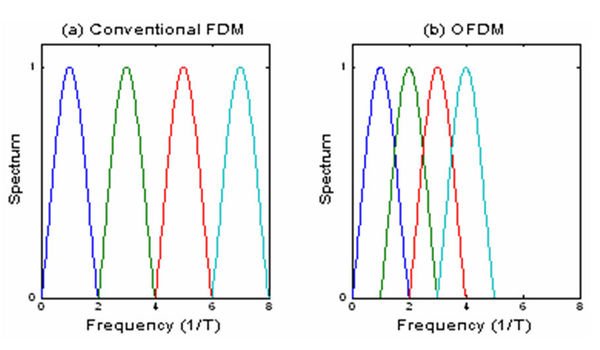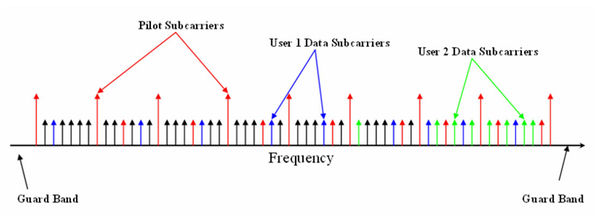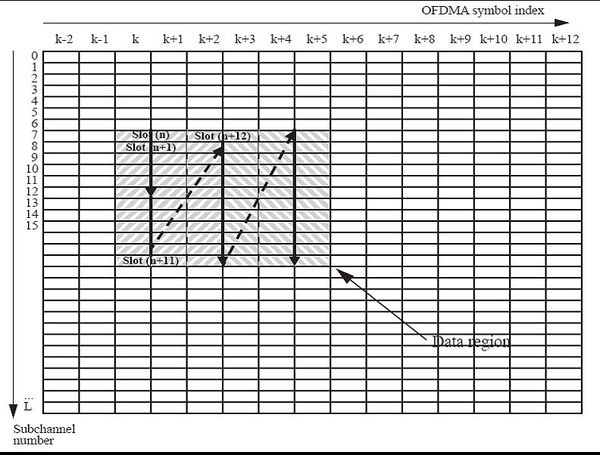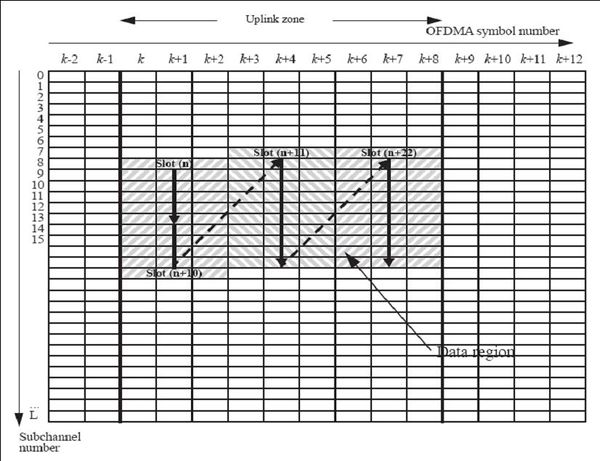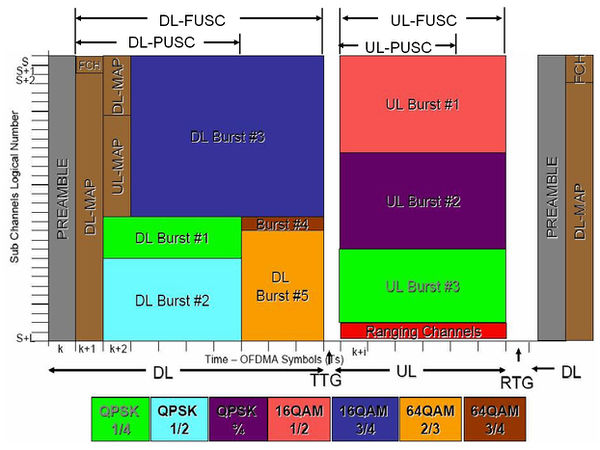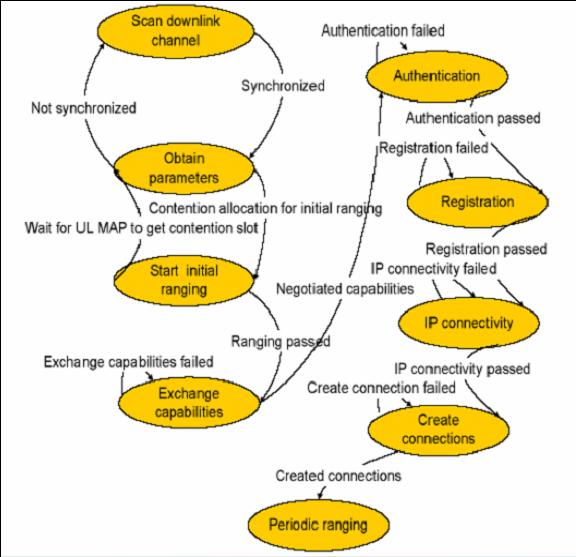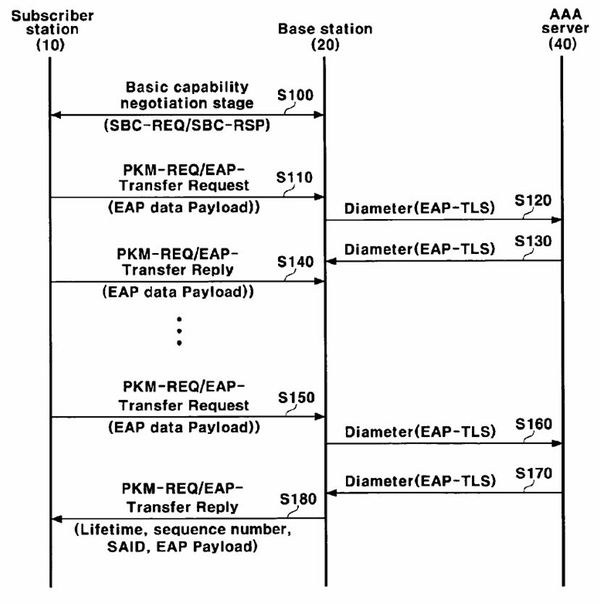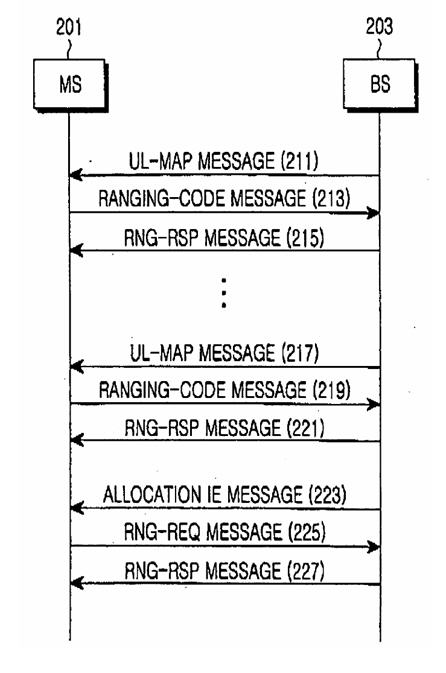Background
Defination of 4G
- The 4G will be a fully IP-based integrated system of systems and network of networks achieved after the convergence of wired and wireless networks as well as computer, consumer electronics, communication technology, and several other convergences that will be capable of providing 100 Mbit/s and 1 Gbit/s, respectively, in outdoor and indoor environments with end-to-end QoS and high security, offering any kind of services anytime, anywhere, at affordable cost and one billing.
Block Diagram
- Data:
- It defines the input data which we need to transmit over the channel. It can be any like audio, video, text data, audio and video together.
- Source encoder:
- It converts the input data like audio, video, text data to binary (0/1) data for transmission.
- Channel encoder/decoder:
- It is used to match the input data rate and channel data rate.The component’s design approach is called FEC (Forward Error Correction). This approach allows us to detect and correct the bit stream. It is important to bear in mind that the correction and detection of errors are not absolute but rather statistical. Thus our goal (as usual) is to minimize the BER. In this method, K original bits, which are also called informational bits, are replaced with new N>K bits called code bits. The difference N-K represents the redundancy that has been added to the informational bits. The manner in which we produce the code bits is called channel code or ECC (Error Correcting Code).
- S/P (Serial to parallel converter):
- We need to convert our data to parallel as here we are doing modulation of multiple bits simultaneously.
- Modulation:
- Here modulation is done by digital modulation schemes there are diff types of digital modulation schemes like BPSK, QPSK, 8PSK, 16PSK, 8QAM, 16QAM, 32QAM, 64QAM etc.
- IFFT (Inverse Fast Fourier Transform):
- IFFT converts the frequency domain waveforms into time domain. And as here we need to add the guard interval so we need the waves to be in time domain.
- P/S (Parallel to serial converter):
- This block converts the parallel data into serial form as in next step we need to insert the guard time for that we have an data into serial form.
- Guard time insertion:
- Between every sub channel the guard interval is there to reduce the ISI (Inter Symbol Interference).
- Channel:
- channel is a medium used to convey the information between transmitter and receiver.
- Guard time removal:
- Used to remove the guard interval inserted between two sub channels.
- FFT (Fast Fourier Transform):
- Main this block converts the signals form the time domain to frequency domain.
- Demodulation:
- Demodulation blocks remove the subcahnnel carrier from received signal
- P/S (Parallel to serial converter):
- After demodulation the signal should be in the sequence. This is performed by parallel to serial
- Source decoder:
- This block performs the digital to analog conversation.
- Data O/P:
- At the end of this block we get our original (transmitted) signal back.
Single carrier approach & Multi carrier approach
- As per above figure the general structure of a single carrier transmission system is depicted. The transmitted symbols are pulse formed by a transmitter filter. After passing the multipath channel in the receiver a filter matched to the channel is used to maximize signal to noise ratio a the device used to extract the data.
- Figure below shows the general structure of a multicarrier system.
- One key principle of OFDM is that since low symbol rate modulation schemes (i.e. where the symbols are relatively long compared to the channel time characteristics) suffer less from intersymbol interference caused by multipath, it is advantageous to transmit a number of low-rate streams in parallel instead of a single high-rate stream. Since the duration of each symbol is long, it is feasible to insert a guard interval between the OFDM symbols, thus eliminating the intersymbol interference. The guard interval also eliminates the need for a pulse-shaping filter, and it reduces the sensitivity to time synchronization problems.
Difference between FDM and OFDMA
- According to the 4G working groups, the infrastructure and the terminals will have almost all the standards from 2G to 3G implemented. The infrastructure will however only be packet based, all-IP. The system will also serve as an open platform where the new innovations can go with it.
- Orthogonal Frequency Division Multiple Access (OFDMA) is a multi-user version of the popular OFDM digital modulation scheme. Multiple access is achieved in OFDMA by assigning subsets of subcarriers to individual users as shown in the figure below. This allows simultaneous low data rate transmission from several users.
- Orthogonal Frequency Division Multiplexing (OFDM) is a method that allows to transmit high data rates over extremely hostile channels at a comparable low complexity. OFDM has been chosen as the transmission method for the European radio (DAB) and TV (DVB-T) standard. Due to its numerous advantages it is under Discussion for future broadband application such as wireless ATM as well.
Definition of slot
- The definition of an OFDMA slot depends on the OFDMA symbol structure, which varies for up link and down link, for FUSC (Full Usage of sub channel) and PUSC (Partial Usage of sub channel), and for the distributed sub carrier permutations and the adjacent sub carrier permutation.
- For down link FUSC and down link optional FUSC using the distributed subcarrier permutation , one slot is one sub channel by one OFDMA symbol.
- For down link PUSC using the distributed sub carrier permutation , one slot is one sub channel by two OFDMA symbols.
- For up link PUSC using either of the distributed sub carrier permutations, and for down link TUSC1 and TUSC2 , one slot is one sub channel by three OFDMA symbols.
- For up link and down link using the adjacent sub carrier permutation , one slot is one sub channel by one ,two, three, or six OFDMA symbols.
Down link zone
- Example of mapping OFDMA slots to subchannels and symbols in the down link(in PUSC mode)
Steps of OFDMA data mapping:
- Segment the data after the modulation block into blocks sized to fit into one OFDMA slot.
- Each slot shall span one or more subchannels in the subchannel axis and two one or more OFDMA symbols in the time axis, as per the slot definition. Map the slots such that the lowest numbered slot occupies the lowest numbered subchannel in the lowest numbered OFDMA symbol.
- Continue the mapping such that the OFDMA subchannel index is increased. When the edge of the Data Region is reached, continue the mapping from the lowest numbered OFDMA subchannel in the next available symbol.
Up link zone
- Example of mapping OFDMA slots to subchannels and symbols in the uplink
Steps for OFDMA data mapping
- The UL mapping consists of two steps. In the first step, the OFDMA slots allocated to each burst are selected. In the second step, the allocated slots are mapped.
- Step 1—Allocate OFDMA slots to bursts.
- Segment the data into blocks sized to fit into one OFDMA slot.
- Each slot shall span one or more subchannels in the subchannel axis and one or more OFDMA symbols in the time axis, as per the slot definition. Map the slots such that the lowest numbered slot occupies the lowest numbered subchannel in the lowest numbered OFDMA symbol.
- Continue the mapping such that the OFDMA symbol index is increased. When the edge of the UL zone (which is marked with Zone_switch_IE) is reached, continue the mapping from the lowest numbered OFDMA symbol in the next available subchannel.
- Step 2—Map OFDMA slots within the UL allocation.
- Map the slots such that the lowest numbered slot occupies the lowest numbered subchannel in the lowest numbered OFDMA symbol.
- Continue the mapping such that the Subchannel index is increased. When the last subchannel is reached, continue the mapping from the lowest numbered subchannel in the next OFDMA symbol that belongs to the UL allocation. The resulting order is shown by the arrows in Figure.
OFDMA frame structure
Advantages
- High spectral efficiency
- Resiliency to RF interference
- Lower multi-path distortion
- Reduced ISI
- Reduces crosstalk
- Can cope with severe channel condition
- Robust
- Good coverage
- High data rates
QOS Management
| Services | UGS | RTPS | NRTPS | BE | UGS/AD |
| Real time service(e.g.VoIP) | Real time service(e.g. MPEG) | Non real time service(e.g. File transfer) | Provides best service among all | When UGS in inactive UGS/AD will become active | |
| Fixed size data packet | Variable size data packet | variable size data packet(High B\W FTP) | combination of UGS and RTPS | ||
| Eliminate overhead & latency | NA | NA | Overhead and latency | ||
| BS must provide fixed size of data grants | SS specify the size | NA | SS not prohibited for argument | BS must provide fixed size when activated as UGS and variable size when activated as RTPS | |
| SS prohibited for arguments | SS prohibited for arguments, | SS prohibited for argument | SS prohibited not for argument | ||
| BS prohibited for unicast | BS only providede with unicast | BS provides periodic unicast on regular basis even during congestion | Multicast when activated as UGS and unicast when activated as RTPS | ||
| Parameters: | Unsolicited Grant Size | Nominal Polling Interval | Nominal Polling Interval | Minimum Reserved Traffic Rate | Nominal Polling Interval |
| Grants Per Interval | Minimum Reserved Traffic Rate | Minimum Reserved Traffic Rate | Traffic Priority | Nominal Grant Per Interval | |
| No piggyback requests | No piggyback requests | Traffic Priority | Piggyback allowed | Piggyback allowed | |
| Nominal Grant Per Interval | Unsolicited Grant Size | ||||
Comparison between conventional invention and present invention
QoS
Network entry and initialization
Ranging
- Ranging is the process which measures state of channel between Mobile station(MS) and Base station(BS).
Need
- Adjusting a correct time offset between a transmitter, e.g., an MS, and a receiver, e.g., a Base Station (BS), and for controlling power in an UpLink (UL).
Ranging Procedure:
- The mobile station receives uplink transmission parameters after acquiring downlink synchronization.
- The mobile station selects one of slots of ranging subchannels allocated within a frame structure and forwards ranging request message (RNG-REQ) to the base station using an initial ranging code.
- The base station receives the ranging request message and forwards all of required transmission parameter adjustment values and status information to the mobile station through ranging response message (RNG-RSP).
- If the status information indicates 'success,' the base station allocates uplink bandwidth for CDMA Allocation IE required to allow the mobile station to transmit the ranging request message (RNG-REQ). If the status information indicates 'continue,' the mobile station returns to the step 2) and repeats the steps until the status information indicates 'success.'
Parameters
| SR. NO | QoS | Patent no. | |
| Conventional Invention | Present Invention | ||
| 1 | Basic conventional TTI was not adaptable,it was concept of fixed TTI. | Here by knowing the protocol service used in QOS adaptivity is possible in TTI. | EP1816807A1 |
| 2 | Pilot signals are too less in uplink signals as compared to downlink so QOS is decreased. | Using precoding matrix determiner we can increase the pilot signals. | EP1816815A1 |
| 3 | Time consumed to transmit data from MAC layer to PHY layer is more. | Time consumed here is less as here the ARQ retransmission timer will start after HARQ retransmission. | EP1821446A2 |
| 4 | Subscriber selects cluster as per the BS broadcast of the pilot carrier | Subscriber selects one or more Cluster using the the SINR value and low traffic loading of pilot carrier | US7164669B2 |
| 5 | Subscriber selects one or more Cluster using the the SINR value and low traffic loading of pilot carrier to increase the quality. | Here SINR value, Base station ID, frequency of physical channel, and the channel quality measurement information are required to increase the quality. | EP1473956A2 |
| 6 | Subscriber station authentication method, a protocol configuration method, and a device thereof in a wireless portable Internet system for allowing authentication was not allowed during handover. | Authentication from subscriber station in wireless portable network system is allowed, comprises of two steps: (1) SS transmitts basic capability negotiatiiion message (SBC-REQ) to BS. (2) SS receives a reply message (SBC-RSP) on the basic capability negotiation message from the BS. | US20070210894 |
| 7 | BS allocates resources to the MS on the assumption that MS is in the worst channel so BS cannot know the channel state of an MS. | The initial ranging is performed after a BS request in order to acquire synchronization between the BS and the MS on the basis of UL-MAP with IE. | US20070202882 |
| 8 | In conventional invention for ranging response RNS_RSP signal is needed. That is nothing but delay in the uplink traffic transmission. | 1.) Reducing the delay in uplink data transmission of portable subscriber station by including a ranging parameter for bandwidth request code in UL_MAP and eliminating RNG_RSP.
2.) In addition ranging process additionally performed with bandwidth request. |
WO2007037633 |
Frame structure
| SR. NO | Frame structure | Patent no. | |
| Conventional Invention | Present Invention | ||
| 1 | Switching noise in the oscillation signal can’t be removed and detection of the failure was not possible. | Isolation circuit is provided to reduce the effect of the switching noise and alarm circuit is also provided for the detection of the failure of the oscillation signal. | WO2007083924A1 |

